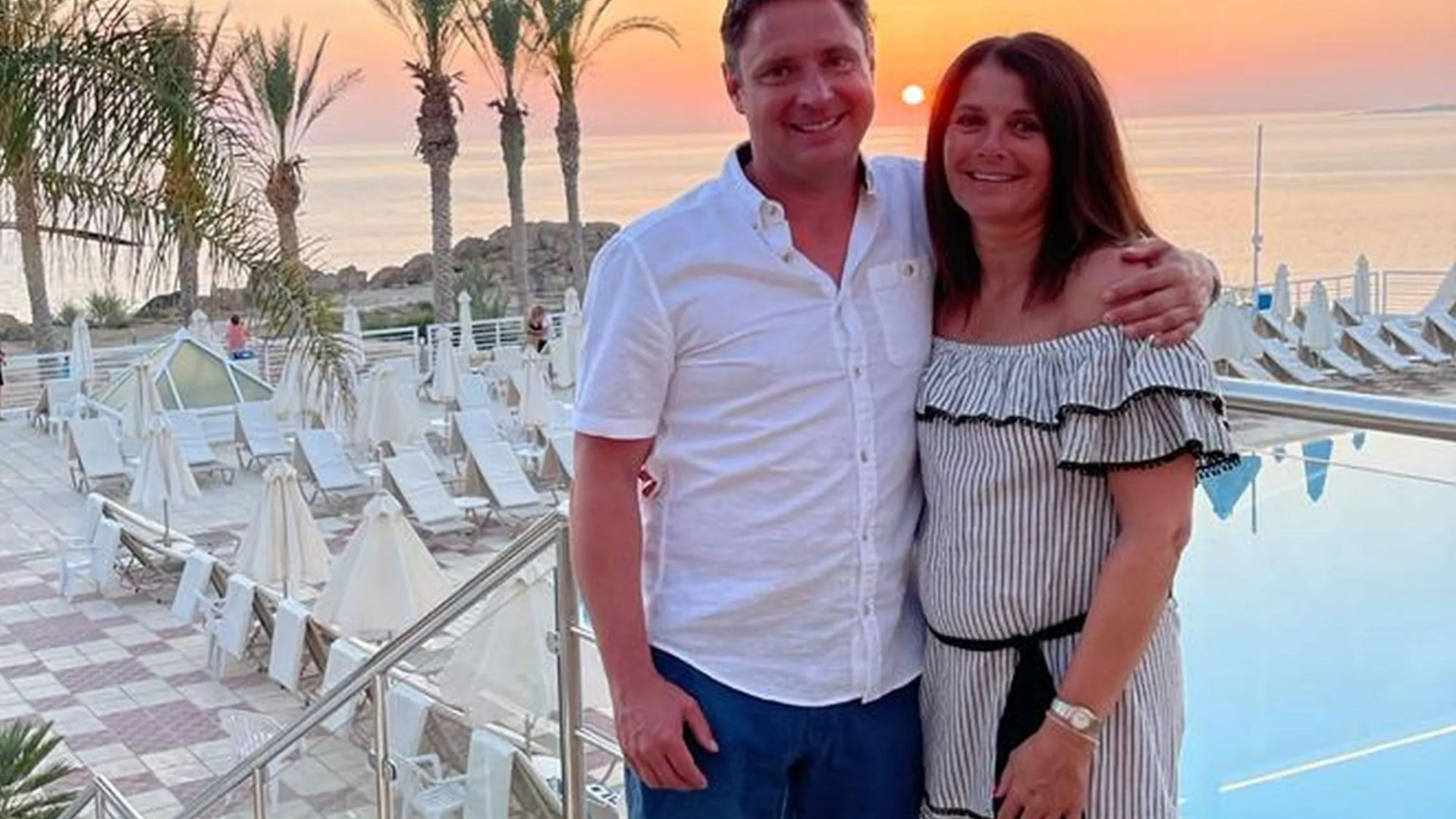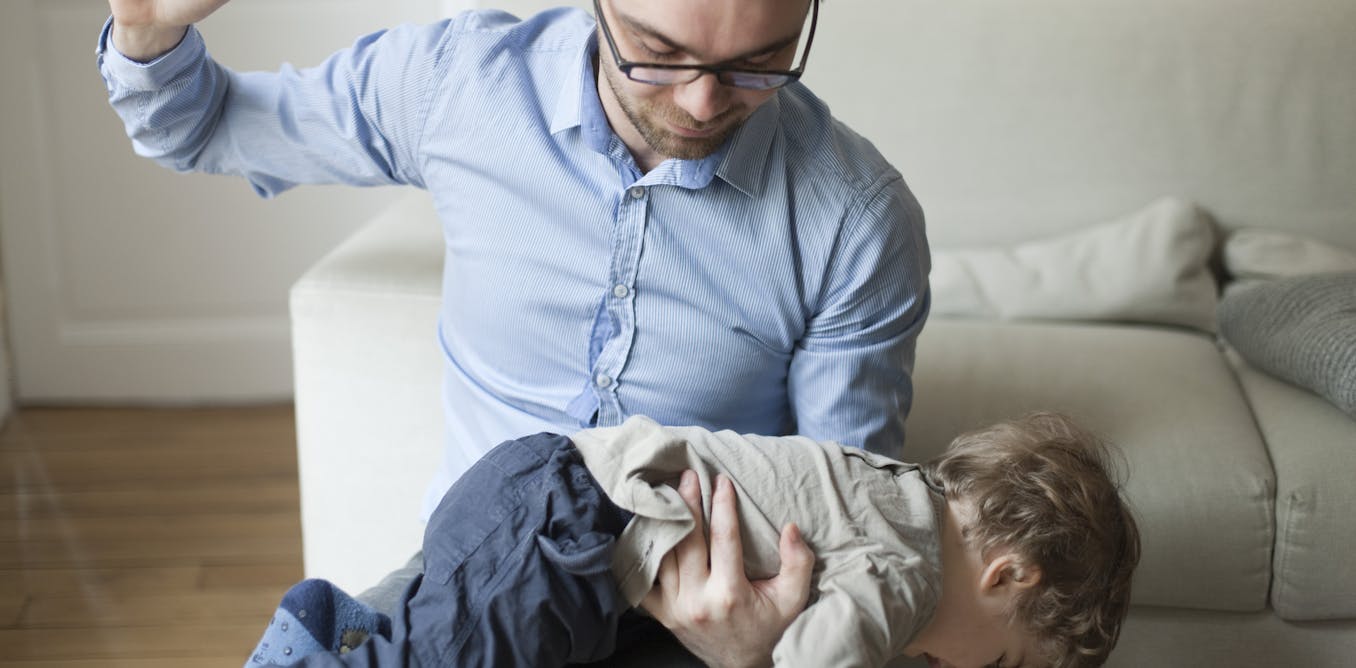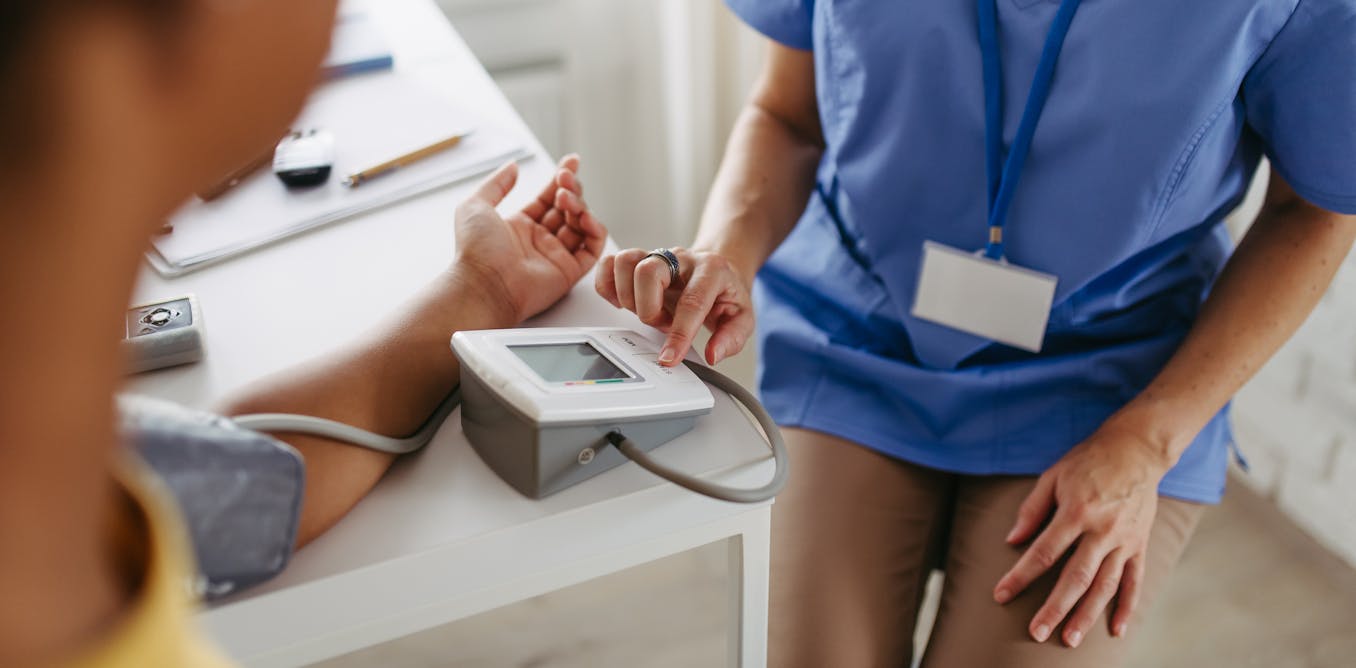A MUM’s dream trip to Cyprus turned into a holiday from hell when she became paralysed while washing her hair.
Caroline Burson was a day into her week-long holiday in Paphos in June last year when she suddenly lost feeling in her left arm while showering.
12

12

12

12
The 53-year-old, who was away with her partner of five years, Richard Maclean, thought the issue may have been muscular.
But she became more concerned when she started to lose feeling in her right arm too.
While waiting for a taxi to take her to the hospital, Caroline became completely paralysed from the neck down.
After rushing to A&E, the mum-of-two said she was told by doctors that she had a case of bad sunstroke and would improve by the morning.
However, Caroline’s condition remained unchanged the following day – prompting Richard to begin organising her repatriation back to the UK.
Caroline, who lives in Alresford, Hampshire, was flown to University Hospital Southampton, where she was told she had suffered a spinal cord stroke.
This is a dangerous condition that typically happens when blood flow within the spine or the arteries is cut off due to a blood clot or a bleed.
Despite being told she would likely never walk again, Caroline took her first steps after seven months in a spinal rehabilitation centre in Salisbury and has since returned home.
The parent, who works as a service adviser, said: “Last June, I went on holiday in Cyprus and I was just having a shower to get ready for dinner when I lost all feeling in my left arm.
“It just went completely dead. I’d lost all use of it in a split second.
“I shouted to my partner to say I think I’m having a stroke.
“We did all the face and speech tests and it was all fine, it was just my left arm. We thought I had just pulled it or something.
“I’d just been lying on the sunbed all day. I sat down to dry my hair then it felt like I was losing control of my other arm too.
“It felt like I was drunk, I couldn’t really walk. We got to the hotel reception and I sat in the chair because I felt a bit odd.
“We had called a taxi and by the time the taxi came, I was completely paralysed from the neck down, I couldn’t move.”

12

12

12
Caroline was rushed to hospital where she underwent a number of tests to determine the cause of her paralysis.
“The doctor said, ‘You’ve probably got bad sunstroke but you’ll be fine in the morning’. I didn’t think so,” she said.
“They put me on a drip and there was no change the next morning
“I was put in the MRI scanner and they saw something really serious.
“I was sent to the main hospital on the island and underwent more tests and they couldn’t work out what it was.
“Richard started the process of trying to get me back to the UK.
“I couldn’t really understand the doctors and nurses, I just wanted to get home and find out what was wrong with me. I was still fully paralysed.”
Symptoms of heat exhaustion and heat stroke
Heat exhaustion does not usually need emergency medical help if you can cool down within 30 minutes.
If it turns into heatstroke, it needs to be treated as an emergency.
Signs of heat exhaustion include:
- Tiredness
- Dizziness
- Headache
- Feeling sick or being sick
- Excessive sweating and skin becoming pale and clammy or getting a heat rash, but a change in skin colour can be harder to see on brown and black skin
- Cramps in the arms, legs and stomach
- Fast breathing or heartbeat
- A high temperature
- Being very thirsty
- Weakness
If someone is showing signs of heat exhaustion they need to be cooled down and given fluids.
Follow these steps to cool them down:
- Move them to a cool place.
- Remove all unnecessary clothing like a jacket or socks.
- Get them to drink a sports or rehydration drink, or cool water.
- Cool their skin – spray or sponge them with cool water and fan them. Cold packs, wrapped in a cloth and put under the armpits or on the neck are good too.
If someone is still unwell after resting in a cool place for 30 minutes and drinking fluids, call 999.
Other red flag signs of heat stroke include:
- A very high temperature
- Hot skin that’s not sweating and might look red (this can be harder to see on brown and black skin)
- A fast heartbeat
- Fast breathing or shortness of breath
- Confusion and lack of coordination
- A seizure or fit
- Loss of consciousness
Source: NHS
After being flown back to the UK, Caroline was told she had suffered a spinal cord stroke and would never walk again.
She was transferred to a spinal rehabilitation unit in Salisbury, where she focused all her efforts on regaining her mobility.
And after seven months, she was able to walk out of the clinic and return home in February.
Caroline said: “I was told there was no expected recovery from a spinal cord stroke and this is it. I was never expected to walk again.

12

12

12
“I knew there was no way that could be the case. I just spent all my time focusing on getting better.”
“I was asked by the doctors when I arrived [what were my goals while I was there]. I said ‘I’m going to walk out of here’ and he didn’t say anything.
“I had to learn how to do everything again. It was a lot of repetition and slow progress.
“I took my first steps at the end of last year. My legs got stronger and stronger.
“I got an echocardiogram test done and they saw I had a hole in my heart, which was why I had a spinal cord stroke. I’ve since had the hole closed.
“Walking out of the clinic in February was just amazing. I wasn’t going to let myself be stuck in a wheelchair for the rest of my life.
“It’s still not really hit me what I’ve been through over the last 14 months. That shower in Cyprus changed my life forever.
“I look back and think it could’ve so easily had a different ending.”
What is a spinal cord stroke?
A Spinal stroke occurs when blood supply to the spinal cord is cut off, usually from a clot.
Symptoms depend on which section of the spinal cord is affected.
The severity of the symptoms depends on how much damage is done to the spinal cord.
In most cases, people will get sudden and severe neck or back pain before or during a spinal stroke.
Other main symptoms of spinal stroke are:
- Muscle weakness in the legs
- Unusual feelings in the lower half of the body, such as numbness, burning or tingling or feeling like a tight band has been drawn around the torso – this is the point at which the blood supply to the spinal cord has been disrupted
- Problems with the bowel and bladder – incontinence or needing to go to the toilet with increased urgency
Muscle weakness in the legs can progress to a complete loss of movement (paralysis) very quickly.
People might also experience muscle spasms.
Spinal strokes are a rare condition, accounting for 1.25 per cent of all strokes.
Source: Brain & Spine Foundation

12

12




